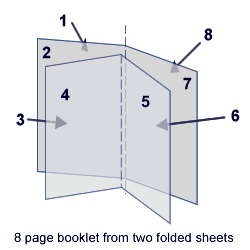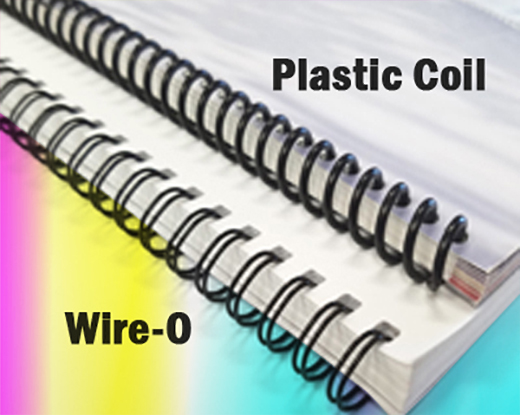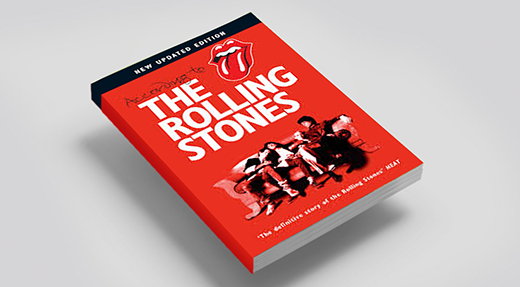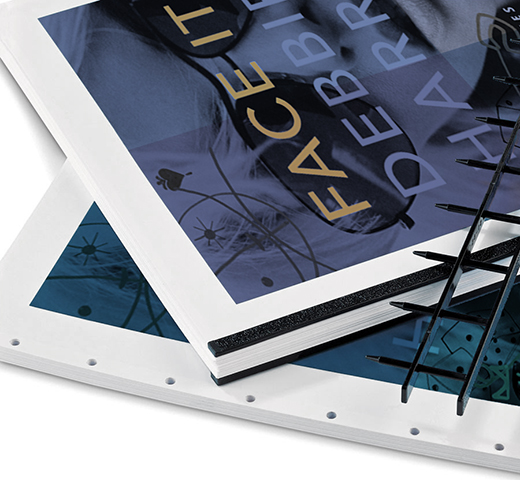If your printing multiple booklets for your company or just one as a gift, we have the binding options, paper stocks and printing methods to fit your needs.
Let’s go over some book binding options.
Saddle Stitched Booklets

What is a saddle stitched booklet? Saddle stitch is when single sheets of paper are printed on both sides, collated, folded in half and then stapled through the fold, usually by a bindery machine called a ‘Booklet Maker’. Saddle stitch binding is one of the most common binding methods for booklets of 60 pages or less. Since the sheets are printed on both sides and folded, each sheet contains 4 pages. For best results, your booklet should contain a total page count divisible by 4 or you will end up having a page or more left blank. The image below gives an example of how 2 printed sheets make up an 8 page booklet.

Plastic Coil Bind and Metal Wire-O Bind

Coil binding (plastic) and Wire-O (metal) have very similar characteristics. First the sheets are punched using a die and then the binding is applied to finish. Both bindings also allow the booklets to lay flat for hands-free reading, making it a good choice for instruction and repair manuals, cookbooks, handbooks, guides, and other reference materials. While Wire-O bind may have a cleaner, more professional look, if it gets dented or loses it’s shape after use it will most likely stay that way. Coil on the other hand maintains it’s shape and would be the preferred method for booklets that will be used again and again. Both come in multiple sizes and colors and can handle booklets of just a few pages to well over 100 pages.
Perfect Binding

What is Perfect binding? Perfect binding is clean and professional looking book bind that uses a flexible glue to adhere the interior pages to the spine of the cover. After the glue dries the booklets are then cut to their finished size leaving a clean, “perfectly” trimmed book. Perfect bound books are lightweight, flexible, and commonly used for catalogs, directories, paperback books, or when the page count is too large to saddle stitch.
VeloBind Booklets

What is a VeloBind? VeloBind involves punching several small holes along the binding edge of your interior pages and covers. Then a strip of plastic with rigid tines is inserted into the holes from the top of the book, and a strip with corresponding holes is placed on the back with the tines protruding through. The book is then placed in a machine that holds the book tightly while the excess length of the tines is cut and the tips melted to seal the bind.
VeloBind is a preferred binding method for law firms and litigation copies since it is not possible to replace or add pages to the booklet without destroying the binding. The binding can be removed with a special tool or knife, but it must then be replaced with a new VeloBind.
Additional Binding Options
We also have Post-Bind, Prong Fasteners, Tape Bind, Comb Bind, Metal Ring, standard stapling and 3 Ring Binder options available.